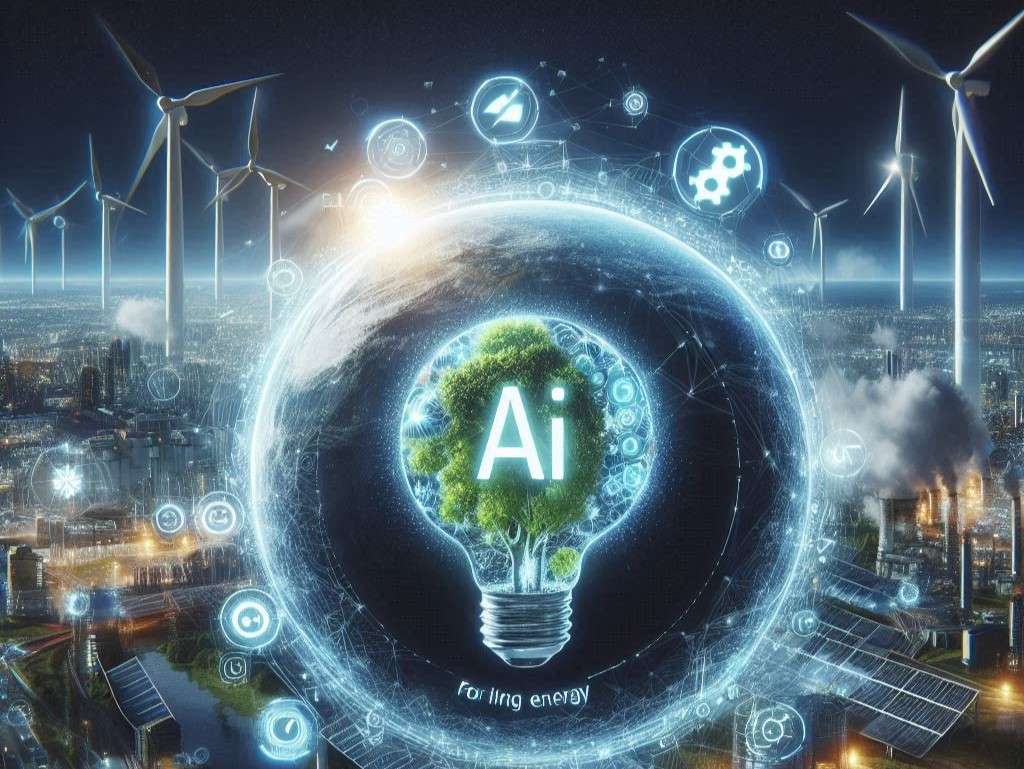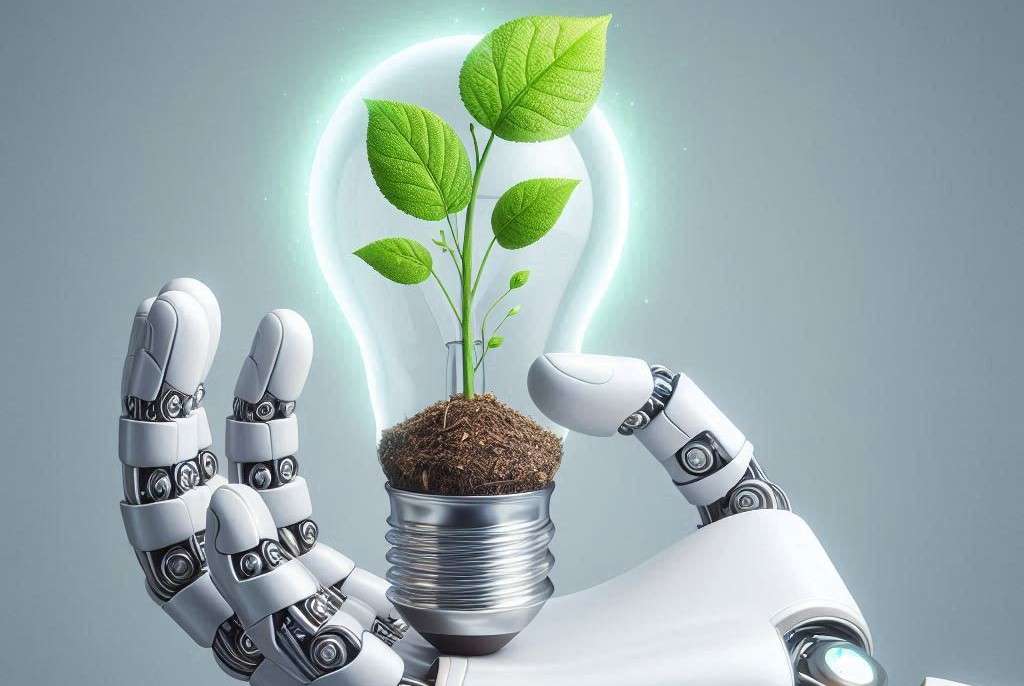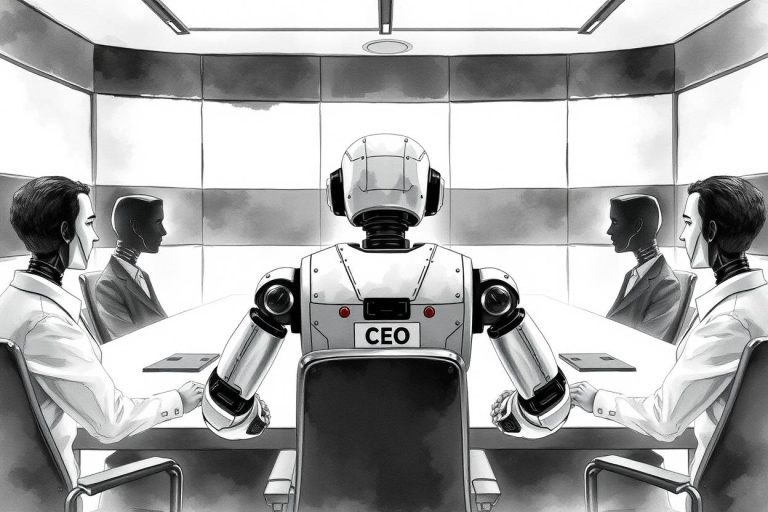Growing adoption has lead to huge AI energy demands – how can we keep up?

From transportation to healthcare, artificial intelligence (AI) has completely transformed industries. And now, the energy sector is up for disruption by AI. There is tremendous potential for AI development services to optimize energy systems, lower costs, and reduce greenhouse gas emissions. However, energy demand could rise as data centers and computing power are relied on more. With investment in AI pouring in, where does the overall forecast sit – will emissions fall or rise?
The Current Energy Landscape: What is AI Energy?
The world’s energy systems are extremely complex, relying on the conversion of natural resources into power and electricity that supports modern life. However, they remain highly inefficient and most still depend on fossil fuels – a major driver behind rising greenhouse gas emissions. Understanding the current landscape is key to analyzing AI’s potential impact.
The Need for Decarbonization
The electricity and heat production sector accounts for 40% of global energy-related carbon dioxide emissions. Continued emission of greenhouse gases is causing climate change, with catastrophic impacts. To limit global warming to 1.5°C above pre-industrial levels, the Intergovernmental Panel on Climate Change (IPCC) estimates a 45% reduction in emissions is needed by 2030.
Energy Systems Inefficiencies
Today’s energy systems waste more than 60 percent of the energy they produce through generation, transmission, and usage losses. Demand forecasts are used by systems to decide how much base load electricity to produce. Backup generators with higher emissions are activated when demand rises or falls above or below forecasts. Poor coordination amongst regions, as well as transmission bottlenecks, also limit the optimal distribution of electricity.
The Promise and Pitfalls of AI in Energy
AI innovation has the potential to significantly improve system optimization, waste reduction and emission reduction in economic sectors. Increased reliance on data centers and computing power that allows for AI, however, could also mean a higher demand for energy. There’s plenty to argue about in favor of AI’s emissions impact and equally persuasively against it, which is why it is so important to explore the promise and peril in a bit more detail.
Intelligent Efficiency Gains
Using AI can optimize complex energy systems with reduced waste. Demand forecasts generated by machine learning algorithms can reduce the need for backup generation to a high degree of accuracy. Artificial intelligence energy can also detect anomalies and failures and cut downtime early. AI, when combined with smart grids, can smoothen electricity distribution and redirect the power to détourn bottlenecks. AI thermostats in homes learn to use patterns to help improve heating and cooling efficiency.
Across industries, artificial intelligence energy is achieving savings. Machine learning helps companies optimize supply chains and logistics. AI also minimizes resource use in agriculture and manufacturing through predictive analytics. An analysis by PwC found AI could help cut global emissions by up to 4% by 2030.
The Computational Catch
Paradoxically, advances in AI in energy industry could drive demand growth. Machine learning model development and data processing require intensive computing resources. Training a single AI model can emit nearly 620,000 pounds of carbon dioxide, equal to the lifetime emissions of 5 cars.
As digitalization spreads, more devices, sensors and systems are coming online – generating a tidal wave of big data. By 2025, some estimate the world will have over 180 zettabytes of data. Processing, storing, and analyzing huge volumes of data across thousands of servers consumes massive amounts of electricity.

As investments pour into AI startups and data center construction booms, can efficiency gains outpace computational demands?
Key Factors That Will Influence AI’s Emissions Impact
The specific factors that will tip the scale and cause logical cases for AI to both decrease and increase emissions are becoming clear. Some of these elements – electricity supplies, hardware innovation, regulation, and model development choices – can either offset or amplify the climate impact of AI. Assessing these key variables provides greater clarity on the potential trajectories for AI’s energy and environmental footprint.
AI Model Design
Based on model design decisions, AI’s carbon footprint can be orders of magnitude different. More parameter-intensive neural networks require more data and computing power, but simple linear models can get by with less data and computing power. Compact model architectures, knowledge distillation and transfer learning are being used to develop carbon-efficient AI.
The Source of Electricity Supply
Where AI systems are powered and operated significantly sways emissions outcomes. Data centers and cloud computing facilities located in regions with low-carbon electricity have a smaller environmental footprint. The growth of renewable energy, and its ability to meet surging electricity demand, will impact if AI can cut rather than grow net emissions.
Hardware Innovation
Specialized AI chips and neuromorphic computing aim to reduce the energy needed to run advanced machine-learning models. Carbon-efficient hardware design, such as liquid cooling data center infrastructure, also lowers electricity use. Ongoing advances in semiconductor technology and computing architectures will shape AI’s future carbon impact.
Carbon Taxes and Regulation
Government policies like carbon pricing and emissions caps are critical to curtail AI’s emissions footprint. For example, Europe enacted energy efficiency rules for data centers. Meanwhile, research non-profits and big tech firms have backed efforts toward establishing industry standards for carbon-transparent and efficient artificial intelligence in energy.
Forecasting the Trajectory

Most experts believe AI in energy industry will achieve net emissions reductions globally. However, the degree of decline depends on how key influences take shape. Here are 3 potential scenarios for AI’s energy and environmental impact over the next decade.
Scenario 1: Slow Progress
Under a slow progress trajectory, computational demands outpace efficiency gains as AI adoption grows. Global emissions continue rising through 2030.
Key Drivers:
- Data volumes spiral as internet-connected sensors and devices proliferate.
- The lack of carbon taxes and regulations gives little incentive for energy and AI efficiency.
- Renewable energy growth lags rising electricity demand. Coal maintains its large share of power generation.
- Companies deploy ever-larger AI models without regard for carbon footprint.
Scenario 2: Incremental Optimism
AI achieves moderate global emissions cuts of 2-3% by 2030 but fails to reach its full carbon-reduction potential.
Key Drivers:
- Steady improvements in model design increase computational efficiency.
- Stricter emissions policies phase out the most carbon-intensive coal plants.
- Corporate pledges drive an uptick in renewable procurement and data center energy efficiency.
- Clean electricity advances but remains constrained by infrastructure bottlenecks.
Scenario 3: Accelerated Action
Through coordinated efforts across sectors, AI helps slash global emissions by over 5% by the end of the decade.
Key Drivers:
- Widespread adoption of carbon-efficient models tailored to specific use cases.
- Surge in wind, solar, and battery storage powered by favorable policies.
- Large web companies pioneer ultra-efficient, climate-positive data centers.
- Innovative hardware like carbon nanotube transistors has become mainstream.
- Strong carbon pricing accelerates the retirement of fossil fuel plants.
The Role of Business Leadership
Private sector decisions have a large impact on the outcome of these scenarios. The deployment choices of AI and cloud computing companies influence industry norms with enormous power. Businesses of all sectors decide how judiciously new technologies are incorporated into their operations.
Luckily, more than 100 EU companies have signed responsible AI principles that include areas like accountability, transparency and environmental health. To turn principles into practice, concrete metrics, internal incentives and supply chain engagement are needed. Further EU Regulations will also come into place to tackle other concerns related to artificial intelligence, ethics, environment and societal impact.
Ultimately, it’s the businesses that are going to decide what AI’s trajectory is going to be, and it’s the businesses that understand that environmental stewardship is really the bedrock of technological leadership. If we want to reduce emissions, then we also need the companies that are leading on AI in energy to be leading on reductions too. Resources, data, and expertise will also be pooled in partnerships.
Conclusion
AI has enormous potential to optimize systems and reduce waste and emissions in economic sectors. However, efficiency gains may be canceled out by the emissions associated with higher computing demands. As the variables that will tip the scale are coming into focus, it’s the electricity supplies, hardware, model development choices and regulations that need to be considered. While there is progress, AI can cut emissions substantially only through the coordination of policymakers, researchers, and businesses. If societies play it judiciously, AI could give companies that are meaningfully driving the clean energy transition a competitive edge. Whether AI accelerates climate change or bends the emissions curve is up to leadership in the next decade.




